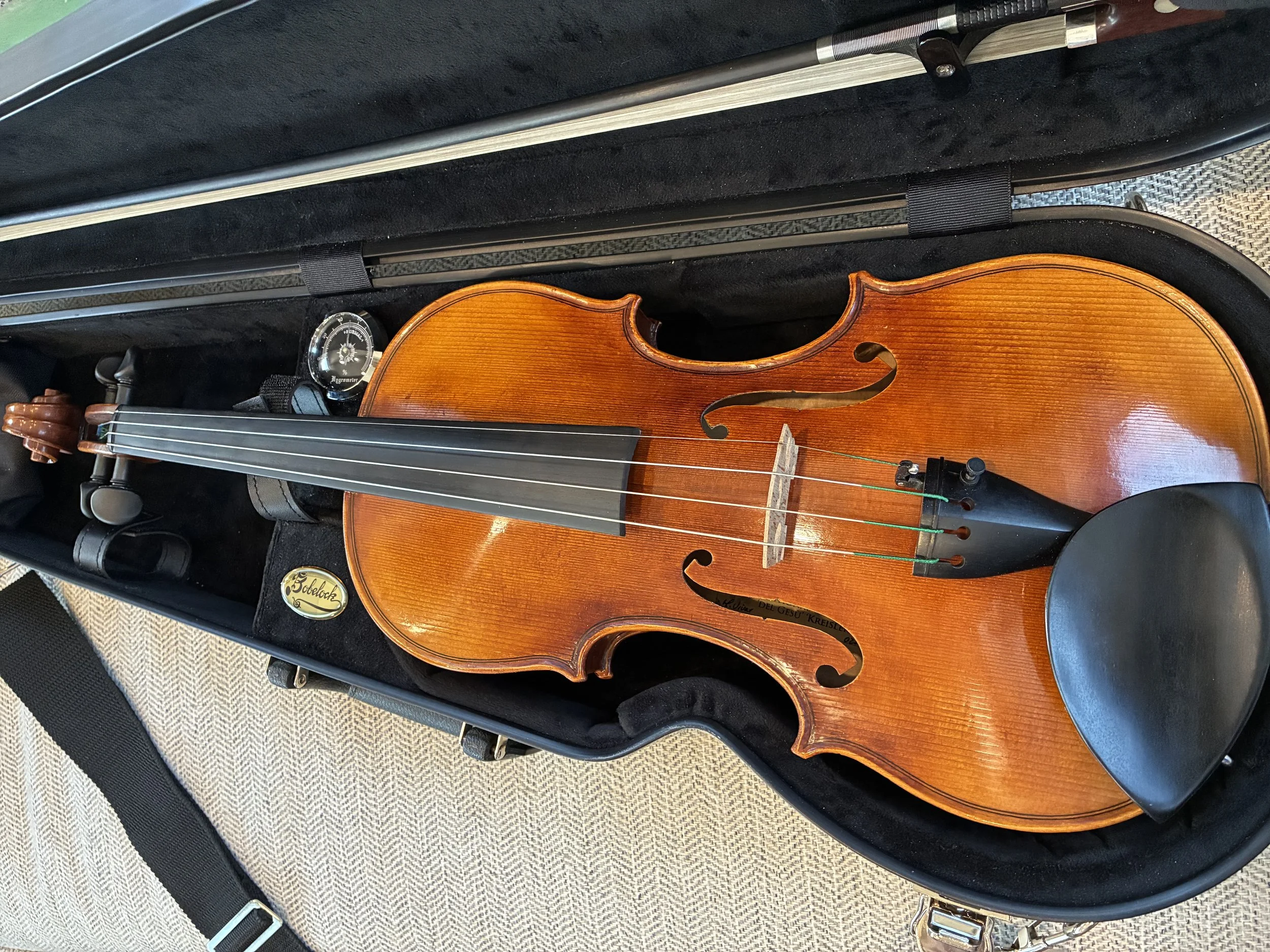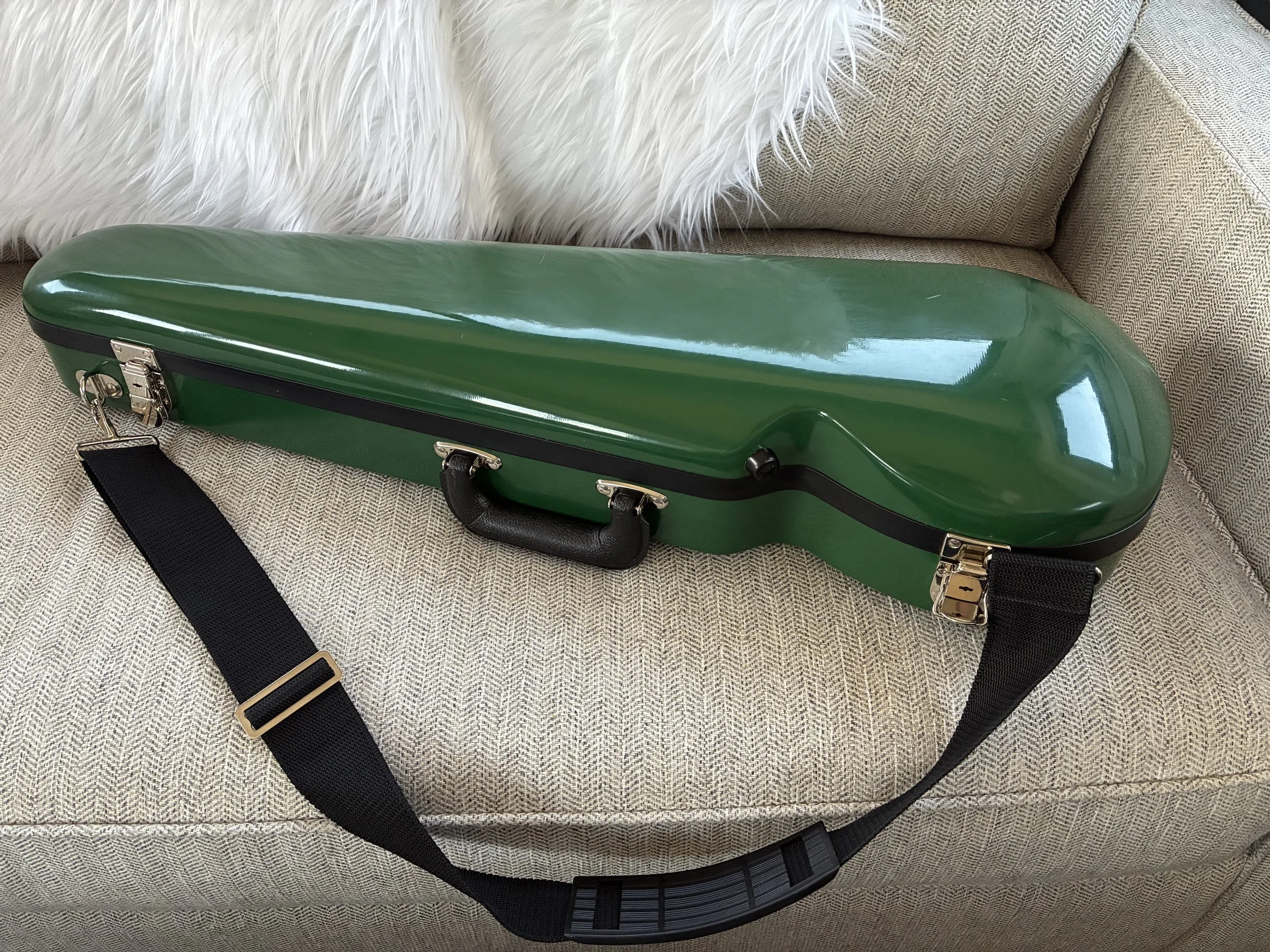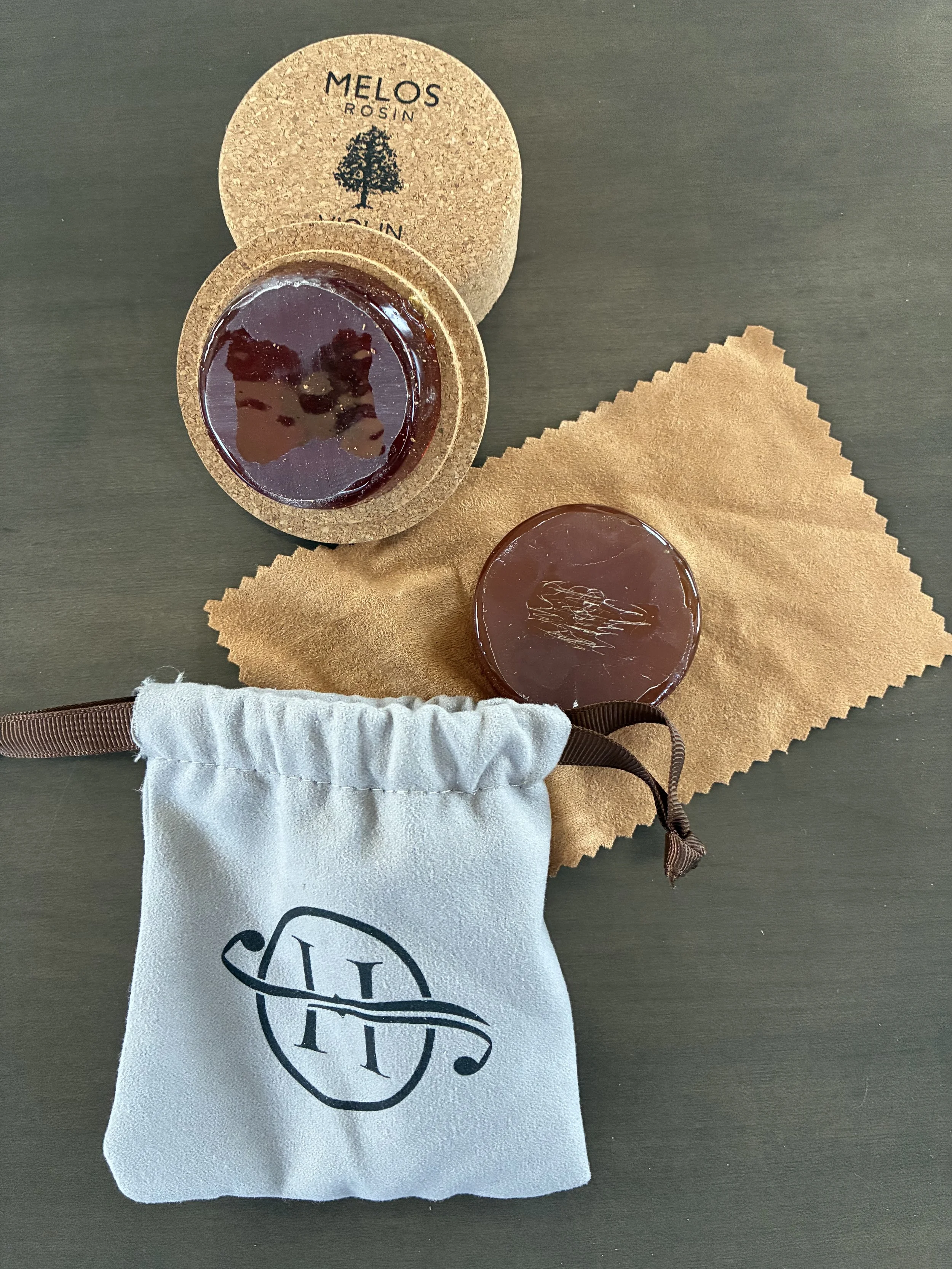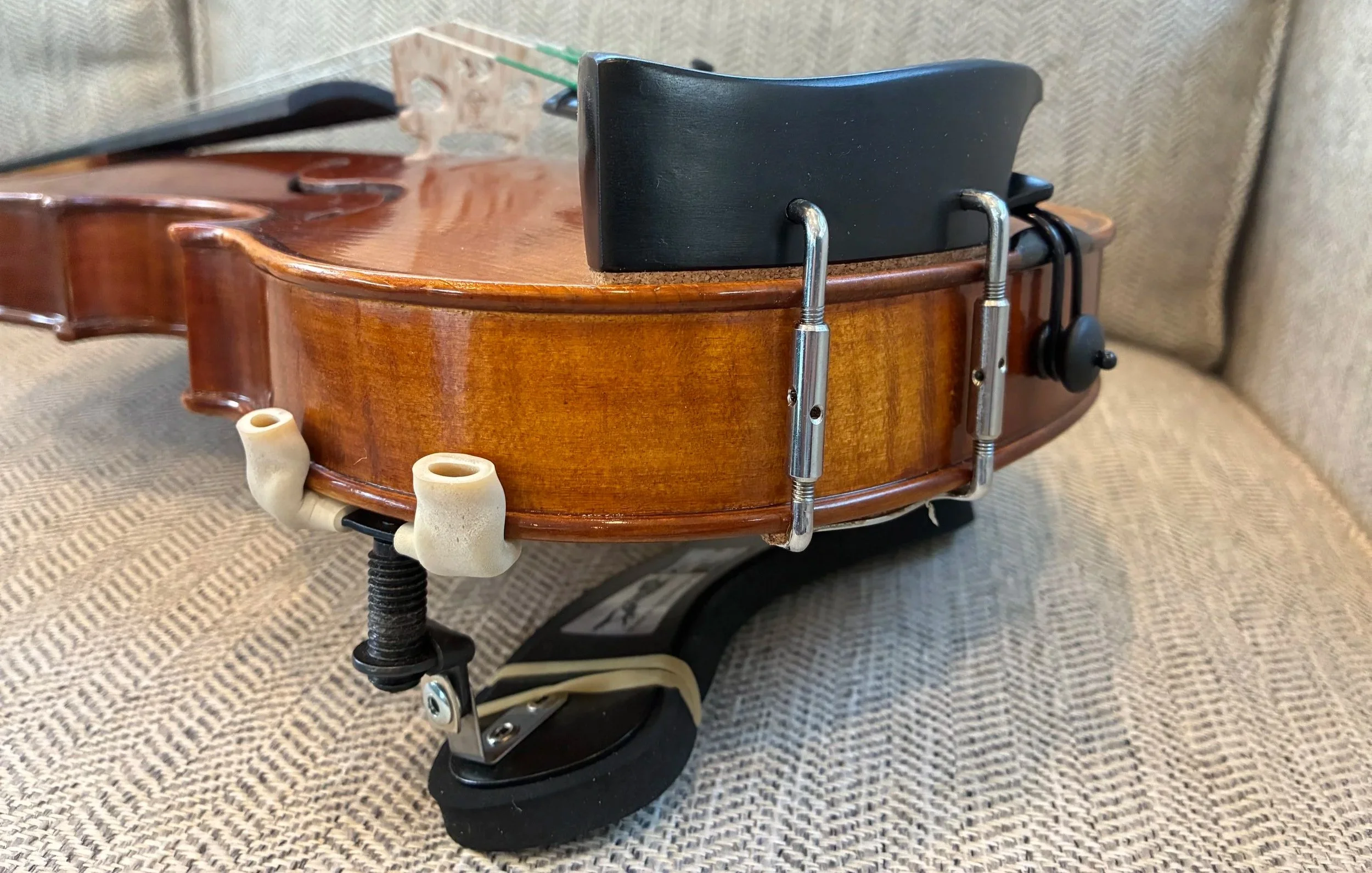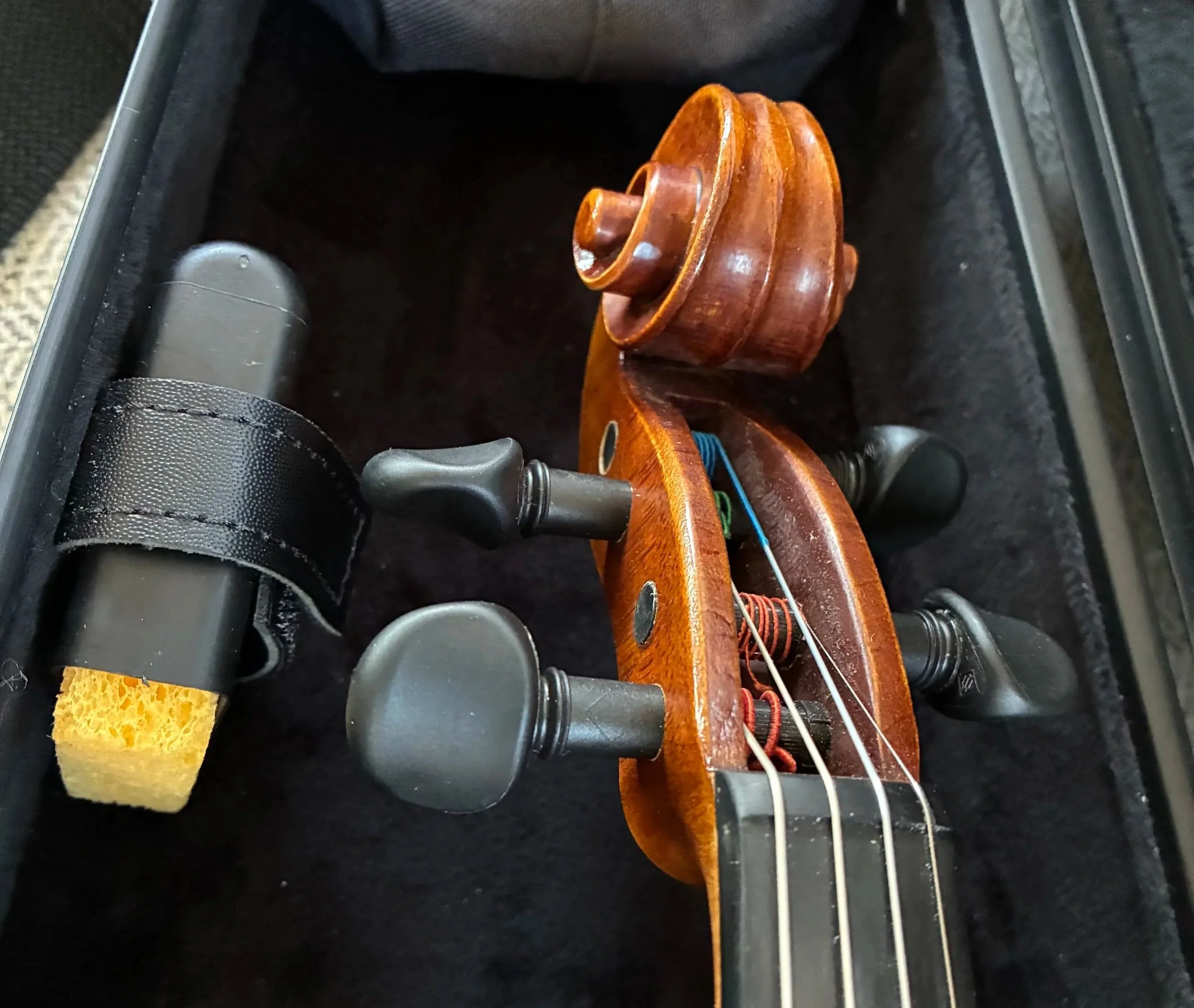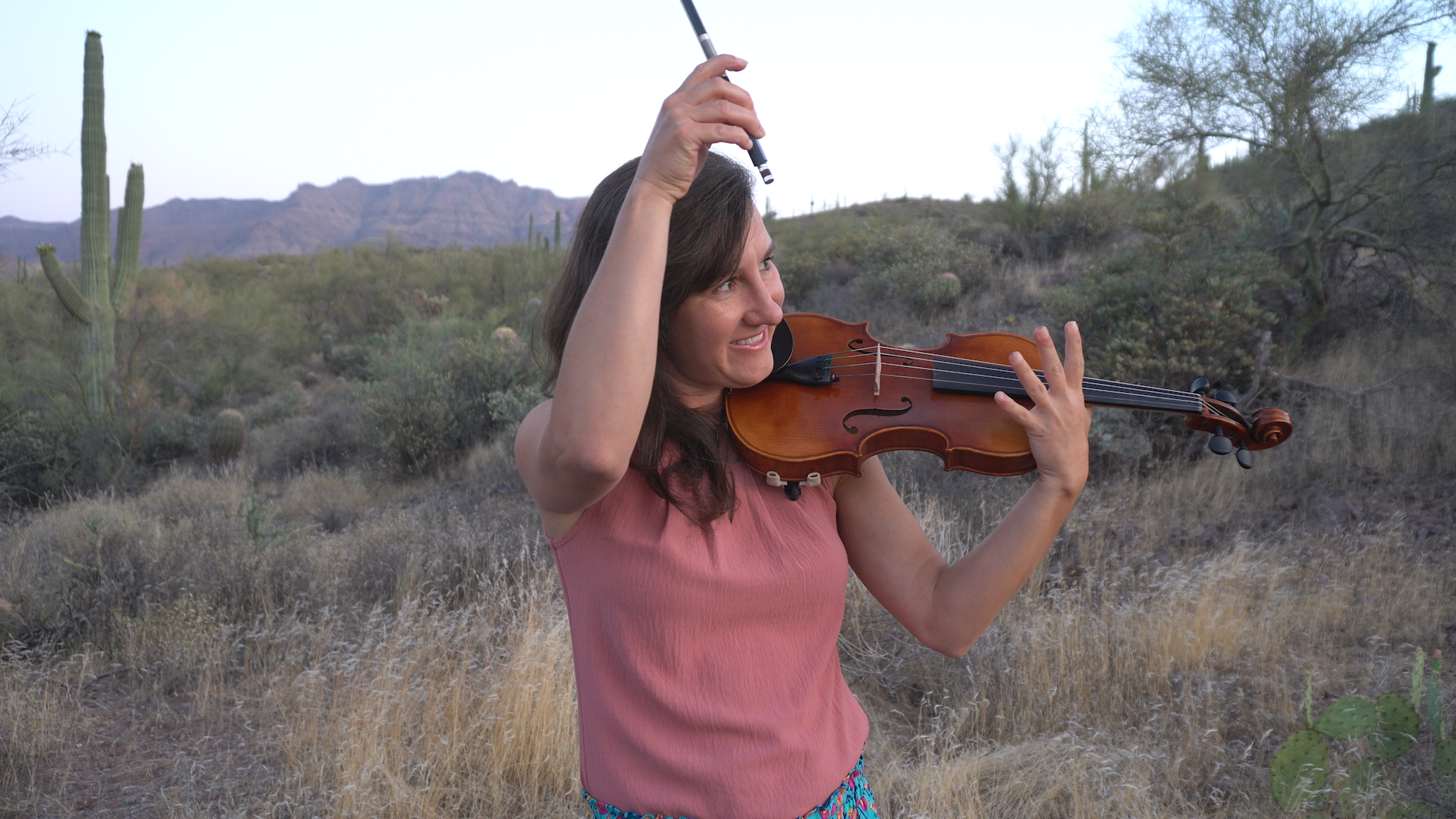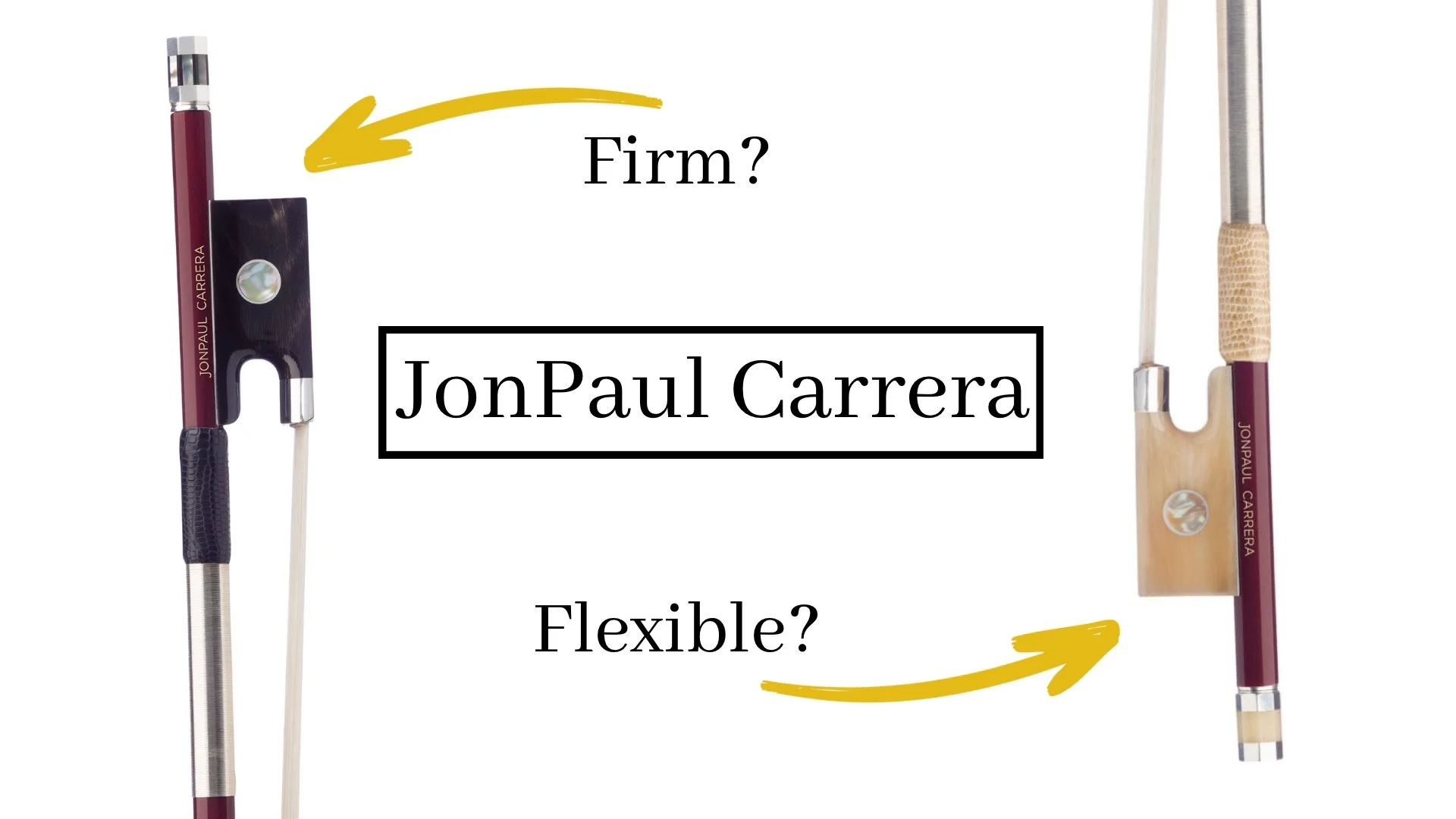What Violin Do I Use? A Violin Teacher's Equipment and Accessories
/I have lots of violins. My main violin, who I call “Maria” is a Kile Hill violin. However, when my husband and I decided to live full-time in an RV, I knew I didn’t want to take Maria with me until I knew what I was getting myself into.
So I started shopping for a violin online, did some in-home trials, and fell in love with this Holstein Traditional Kreisler violin who I’ve named “Meriwether.”
(For my process of picking out a violin online, click here.)
When you see how much this violin costs, you might be surprised. I’m used to playing on much more expensive violins, so is this a downgrade for me? Actually, not really. I’ve been playing Meriwether for a few months now and I truly enjoying playing it and find it suits my needs just fine.
This violin has very similar qualities to my much more expensive Maria. Meriwether has a rich, clear, crisp tone. He’s brilliant without being too bright and complex without being muddled. He has focus, and yet he still has warmth to the sound.
Fiddlershop offers three levels of craftsmanship for their Holstein line of violins: Traditional, Workshop, and Bench. The quality of wood and craftsmanship goes up with each level. I opted for the cheaper Traditional and considering how many times I’ve come close to destroying Meriwether on this adventure, I’m glad I did.
My Current Bow: JonPaul Carrera Firm Violin Bow & Fiddlerman Pro Carbon Fiber
Again, I have lots of bows. My main bow is a nice German pernambuco bow, but for RVing, I wanted something a little more durable and a little more replaceable. I knew I wanted a carbon fiber bow since carbon fiber is less affected by humidity and temperature changes and it’s stronger if it’s accidentally dropped. I ordered the Fiddlerman Pro Carbon Fiber and the Coda Diamond SX to try out. Both bows had wonderful response and control. The Fiddlerman is very light and the Diamond SX was a little more stable. I honestly couldn’t decide between bows and I really wanted both of them. At the time Fiddlershop was running deals on their bows. Since I was torn anyway, the $200 price savings helped me make up my mind.
I recently felt like I needed more from my bow. The Fiddlerman Pro Carbon Fiber can’t be beat for the price, but once I tried out the JonPaul Firm Carrera bow, it made such a difference in my playing, I knew I needed to have it. It brings out so many wonderful qualities of my violin that I didn’t hear with the Fiddlerman bow.
*Note: If you’re shopping for bows, I wouldn’t recommend the Fiddlerman Pro Carbon Fiber for beginner or intermediate students. It’s very light which can mean it’s hard to control. The Coda Diamond SX wasn’t quite so light, so it would be suitable for an intermediate player. I have lots of recommendations for bows for beginner and intermediate students here.
My Case: Bobelock 1063
Now this little case has definitely proven its worth and saved Meriwether from certain destruction. Watch the video on the right to see how this case survived the hydraulic squeeze test and saved Meriwether!
You can find more about this case here.
I’ve been tooting the geared peg horn for a long time now. Geared pegs work similar to guitar pegs. There are gears inside of the pegs that allow the peg to turn much more gradually and more smoothly than traditional wooden pegs. The pegs also aren’t as subject to temperature or humidity changes the way wooden pegs are.
Geared pegs just make it easier to tune. Period. If you’re going to play violin, I strongly suggest upgrading to geared pegs. It was the second thing I did when I got Meriwether (after changing out my chinrest).
Note: Fiddlershop and Kennedy Violins are the two online shops (that I know of) that can install geared pegs before the violin is shipped to you.
My Rosin: Melos and Holstein Reserve
I use both Melos Light and Holstein Reserve rosin interchangeably. They both offer a crips response, smooth playing, and minimal dust to have to wipe off. Light rosin is better for summer and the darker Holstein rosin is better for dry winters.
My Strings: Evah Pirazzi
Alright, you probably know I’m a huge Evah Pirazzi fan. These strings just make everything better. Like my Kreisler violin, they offer a blend of brightness without being shrill, complexity without being muffled, and resonance without being overpowering.
Like just about everything with the violin, strings are a matter of personal preference. However, most of my students who try Evahs always comment on the marked difference and improvement in playing.
Learn more about strings in my article: Best and Worse Violin Strings.
My Shoulder Rest: Wolfe Forte Secondo
When it comes to shoulder rests, there is no one size fits all. It’s a very personal choice and it usually takes some trial and error to find the right one. I use the Wolf Forte Secondo because it’s heavy duty and more durable than your standard shoulder rest. The screws that attach to the feet are large and extend out quite a bit for average or tall necks. And it’s quite customizable with a bendable cushion.
If you’re wondering what that rubber band is for, that provides extra traction. The rubber band helps grip my shirt to prevent the violin from slipping. You can also use that rubber band to add extra cushions, like those little red makeup sponges which are great for adding a little extra cushion or height.
If you’re interested in trying a different shoulder rest, check out my 3 Favorite Styles of Shoulder Rests.
My Chinrest: Supreme Teka Extra Tall 30mm
I have an average to taller neck. This problem can be solved in two ways:
#1: Extend the shoulder rest feet to bring the violin up to the chin or
#2: Buy a taller chinrest to keep the violin lower and closer to the shoulder.
The #2 option is always the way to go. Extending the shoulder rest feet to bring the violin up to your chin can work as you’re figuring things out, but the further the violin gets away from your shoulder, the farther up your hands have to reach. While this doesn’t seem like a big deal, it makes a huge difference with your finger placement and reach, especially with the pinky. If you have trouble reaching your pinky, it could be that the shoulder rest is too high off your shoulder.
All that to say, I use an Extra Tall 30mm chinrest…and at the time of writing this, I’m considering going to a 40mm. We’ll see!
Please don’t go out and buy a Teka just because I use one. The chinrest is probably the most personal choice of all the choices you make when it comes to equipment. If you’re interested in changing your chinrest, I’ve written an extensive guide to help you select the right chinrest for you.
My Accessories: Violin Humidifier and D’Addario Instrument Humidifier
Humidity control is a major factor in violin care. You want to keep your violin in between 40%-60% humidity. You should always be aware of the humidity level, but be especially cognizant if you live in a dry area or during winter months when humidity drops and heaters lower the humidity in your house even more.
When we started RVing, we knew we were going to be spending a lot of time in the Southwest where the humidity is often around 10%, so making sure Meriwether stays nice and comfy is very important. I use both an in-case humidifier and an in-violin humidifier.
For my in-case humidifier I use a D’Addario Instrument Humidifier. This is a pretty basic (and cheap) humidifier option. It’s a sponge and a holder. One thing I like about this simple option is that I can add a few drops of pine essential oil to the sponge. It helps with keeping microbial growth under control and when I open my case I’m always greeted with the subtle scent of pine. The very first “real” violin I received from Shar Music (my Sophia) had a few drops of pine in the humidifier when I received her in the mail. So I associate that scent with the same feeling of awe I experienced the first time I opened the case and held a real, premium quality violin in my hand. It’s a magical moment. I like to relive it every time I open my case.
I also use a humidifier that is inserted into the violin to help maintain humidity levels when I’m playing the violin. Dampit is the standard brand for these types of humidifiers that go inside your violin. However, I’ve experimented with some knock off brands that are a little cheaper and I’ve found I like this humidifier just as well as the Dampits (and it’s half the price!).
Happy Practicing!
~Lora
* I was not asked nor paid by any company to review any of these items. I selected and purchased these items based on my own needs and projects. If you choose to purchase any of this equipment and use the links on this page, I make a small commission at no cost to you. I only endorse products that I use or products that I believe bring value to you. If you would like to support Meadowlark Violin Studio, clicking through my links to purchase products helps me in my mission to make learning violin easier for everyone!



